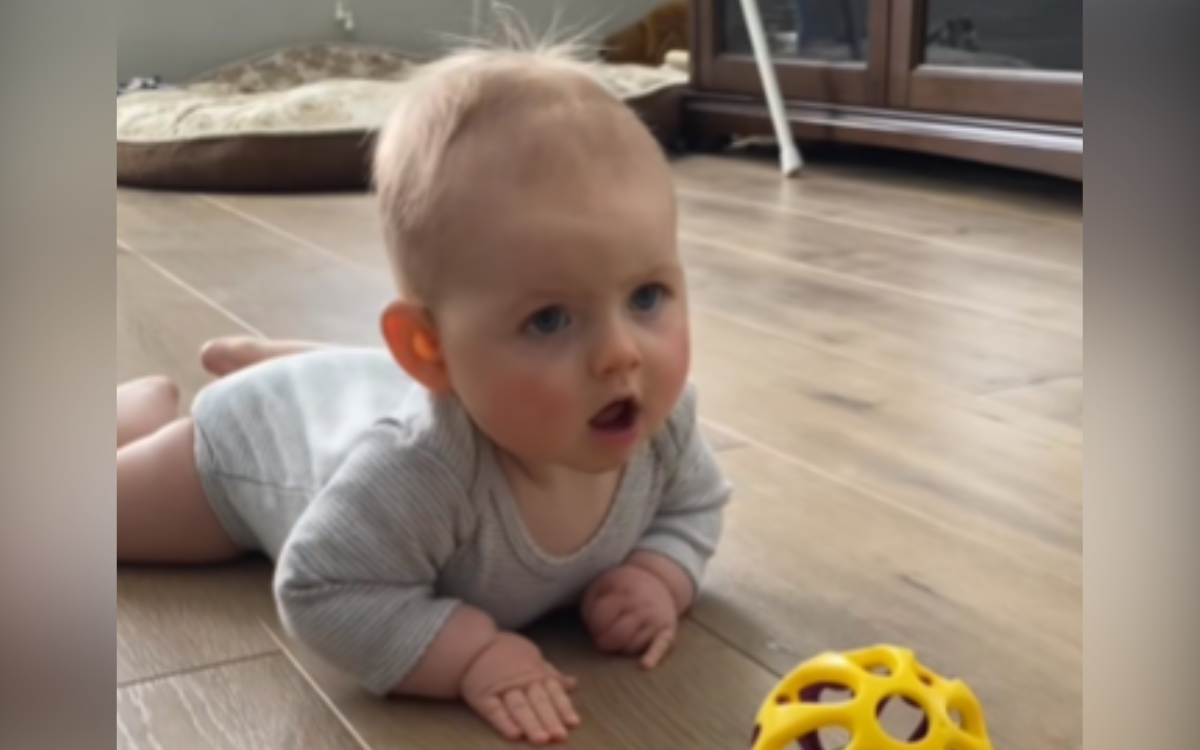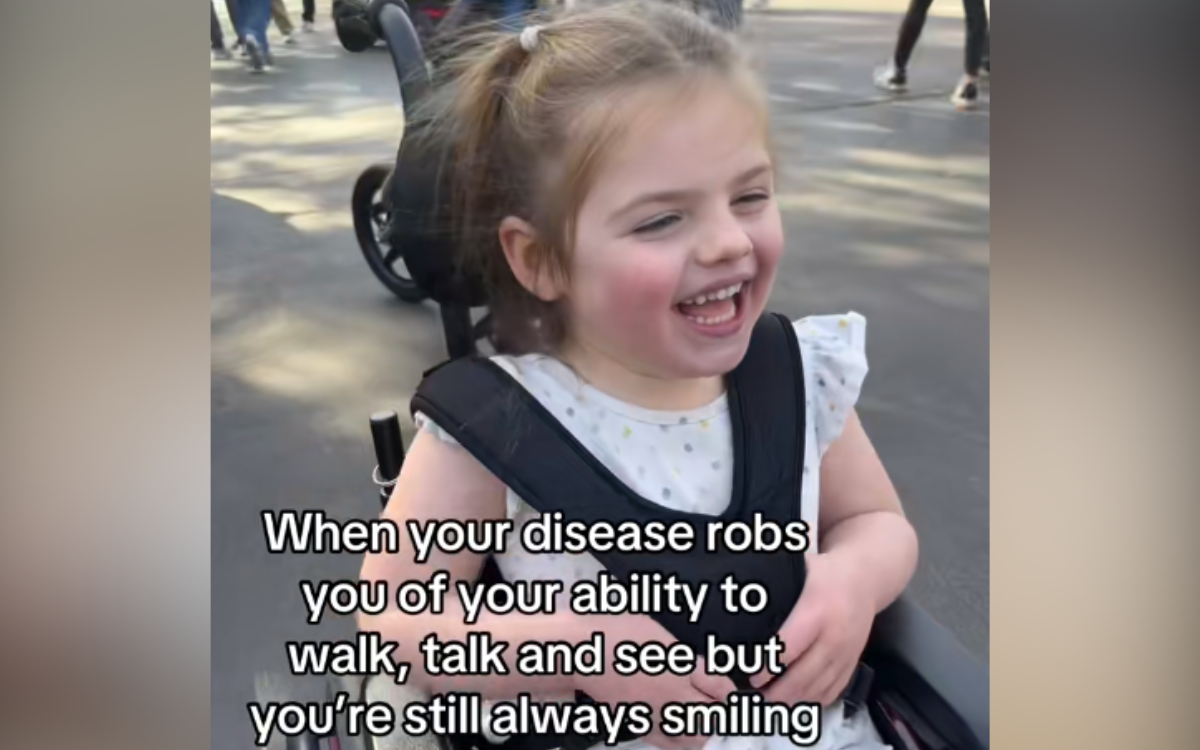
A Canadian mom has shared a video of her daughter as a toddler and the signs in her behavior that pointed to what lay ahead.
In a clip posted to TikTok under the handle @mandaburritt, Amanda Burritt, from Calgary, Alberta, posted a compilation of clips from when her daughter Emma was a toddler.
“Signs from 6-12 months that led us to getting our daughter’s devastating diagnosis,” a caption accompanying the video reads.
Burritt told Newsweek: “When Emma was around 8 months old, I started getting a little concerned about her development but was brushed off by our doctor stating kids develop at their own pace.”
It is normal for parents to worry about whether their children are hitting all of their developmental milestones.
In 2022, a survey of 2,000 parents of children ages 3 and under, conducted by OnePoll on behalf of VtECH, found 59 percent worry their babies are not hitting developmental milestones.
Burritt had more concerns than most new moms and dads, though. “Emma wasn’t sitting on her own, crawling or moving around at all,” she said.
The video posted online offers a glimpse of how Emma behaved during that period. What Burritt saw on a day-to-day basis was enough to convince her to take action.
It started with her self-referring Emma to Early Intervention in the hopes that, whatever issue her daughter had, they would be able to help her catch up with her peers.
However, by the age of 1, little had changed. “She was still behind in all areas and had a lack of awareness of her environment,” Burritt said.
At this point, their doctor began to express similar concerns, and Emma was referred to British Columbia Children’s Hospital where further tests were conducted.
Even then, Emma’s condition did not become immediately clear. “The only thing they found was her MRI report, which said she had insufficient myelination of the optic radiations.”
With no other explanations, it was decided that Emma would need to undergo Whole Exome sequencing, in order to find out what was going on. Seven months later, Burritt received Emma’s official diagnosis: KIF1A-associated neurological disorder.
KAND is a rare, degenerative neurological disorder that is caused by mutations in the KIF1A gene. This is responsible for producing the KIF1A protein, which plays a key role in the healthy development of brain cells and nerve fibers.
TikTok/mandaburritt/thelifeofemmabean
These mutations can impact the nervous system, resulting in developmental delays such as the ones Burritt witnessed with her daughter Emma and a variety of neurological problems ranging from issues with vision to intellectual disability.
Burritt was told her daughter’s condition was “ultra rare,” with around 600 cases diagnosed worldwide. There is no specified treatment or cure for KAND as symptoms can different greatly from patient to patient. However, those caring for someone with the condition can take steps to assist in areas of their school, work or social life.
Emma is now 6, and Burritt says she has yet to make much in the way of “significant gains” in the years since that TikTok video was filmed.
“Emma is blind, nonverbal, nonmobile, has little to no balance and very poor motor planning,” Burritt said. “She is fully dependent on us for everything and requires 24/7 care.”
That hasn’t stopped Burritt from pouring everything she has into getting her daughter the best-possible care. “We have done everything in our power to ensure she gets the best therapies and opportunities to thrive,” Burritt said.
“We moved provinces for better resources available, leaving behind our entire lives. I gave up my career as a nurse so that I could give Emma 100 percent of my attention, and bringing her to therapy became my full-time job.”
Burritt and her family have traveled thousands of miles to get Emma the best therapy. She even raised over $40,000 last year to pay for a robotic walker to help strengthen her daughter’s legs and stimulate pathways in her brain.
In the meantime, Emma attends a specialized school for disabled children where she undergoes daily therapies as part of her day-to-day learning and even enjoys adaptive horseback riding aimed at improving core strength.
Through all of this, Burritt has never given up hope, buoyed in part Emma’s smile and eternal sunshine spirit. “Over the years, she has spent hundreds and hundreds of hours working so hard fighting against this disease and, despite her challenges, she remains the happiest little girl,” Burritt said.
“She loves therapy and, for that, I’m grateful. Although the progress has been slow, it’s still progress, and we are thankful she hasn’t regressed. She has gained a lot of strength overall, and I’m beyond proud of her.”

TikTok/mandaburritt
Burritt posts videos about Emma to TikTok and also Instagram, where her content is shared under the handle @thelifeofemmabean. In doing so, Burritt said she hopes to raise awareness about KAND and help other families get the treatment they need as soon as possible.
“We recently attended the Kif1a conference in Boston and a huge factor in how small our Kif1a community is due to genetic testing not being accessible or available,” Burritt said.
“Emma’s disease shares a lot of similarities to cerebral palsy, so lots of kids get misdiagnosed with that, prior to receiving their genetic testing. I think it’s important for people to fight for genetic testing if there are no clear reasons their child has delays.”
Burritt would always encourage parents to “listen to your gut” when it comes to your own child’s development. Doing so will allow them to get the help they need, she said, should they need it, as soon as possible.
